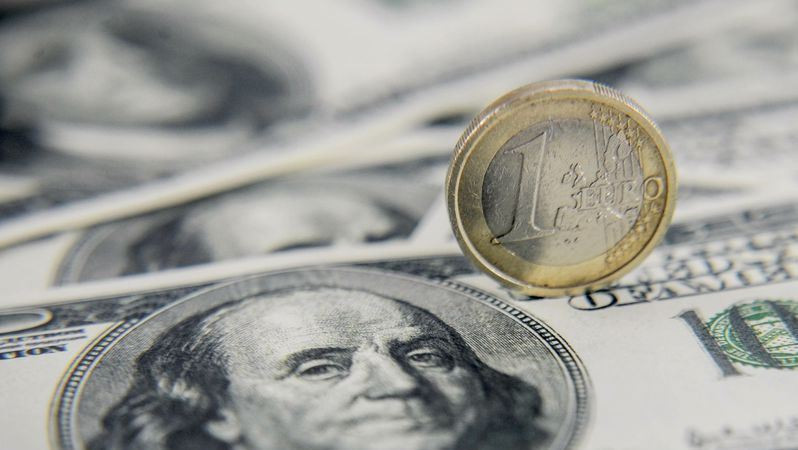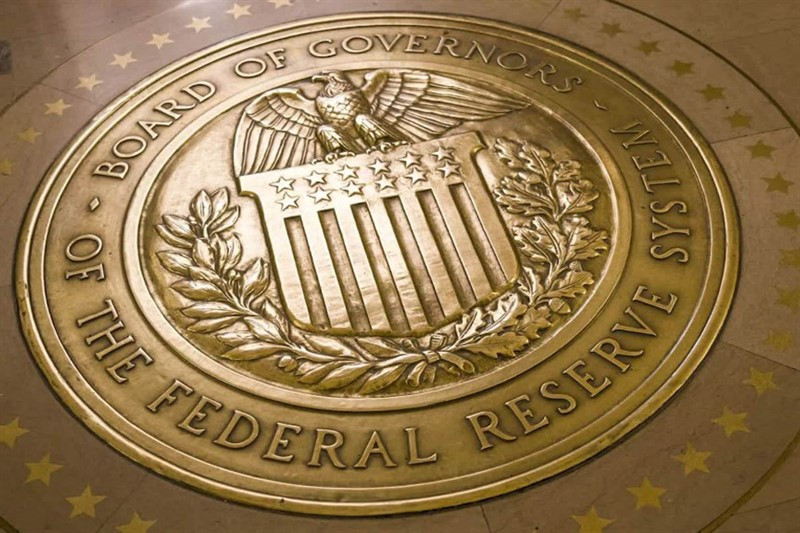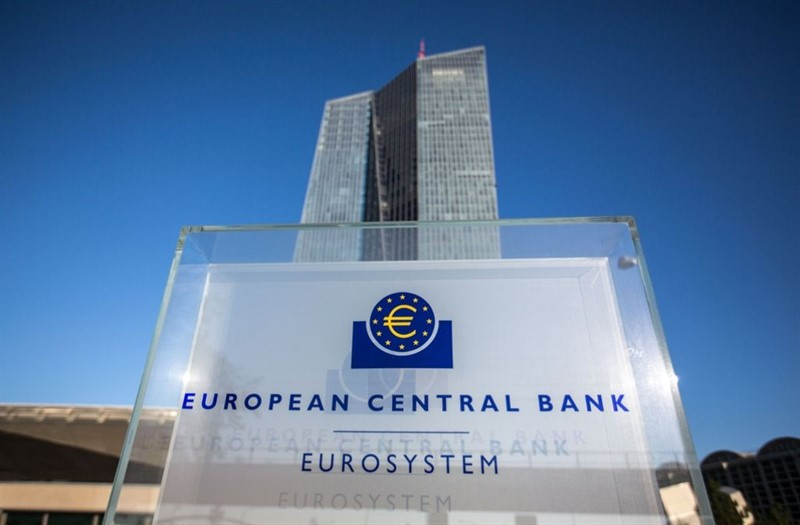The Federal Reserve's promise to fight inflation to the bitter end leads to upward pressure on the dollar in a world where surges in commodity prices denominated in US currency strengthen inflation expectations everywhere and force other central banks to imitate the US central bank, because otherwise their currencies are doomed to weaken.
"All of this points to excessive tightening around the world – a prospect deeply troubling global markets, with falling stocks, flatter bond yield curves and a serious deterioration in financial conditions," Citigroup strategists said.
According to their estimates, the probability that the world economy will slide into recession is almost 50%.
It is assumed that even if the tight monetary policy of the leading central banks provokes a global recession, the dollar will still benefit due to its protective properties and ability to grow in times of economic uncertainty.
Amid increased volatility in the markets, many investors this year began to get rid of stocks and bonds, preferring the greenback.
As a result, the yield of 10-year treasuries reached the highest level since 2011, rising above 3%.
Wall Street's major stock indexes are already trading in a bear market, which is defined as a 20% decline from their peak.
Meanwhile, the dollar has strengthened by more than 8% since the beginning of the year and is near the highest values since December 2002.
According to the latest data from the US Commodity Futures Trading Commission (CFTC), the net long speculative position in USD index futures has reached a record high in five years.
The greenback has assumed the role of a global hedger of stagflation, and dollar cash is one of the few financial assets that generate income, analysts at Deutsche Bank say.
Although it is currently difficult to go against the strengthening of the dollar, ANZ Bank economists still expect its strength to weaken at the end of the year.
"The US dollar will remain strong in the near term, as the Fed is aggressively raising rates, and risks to the prospects for global economic growth are increasing," they noted.
"We still believe that the greenback will begin to weaken later this year, when inflation in the United States finally reaches a peak, and the Fed will return to more modest steps in raising rates or even think about a pause," ANZ Bank added.
Most analysts interviewed recently by Reuters believe that the federal funds rate at the end of the year will be 3.25%-3.50%, which roughly corresponds to the FOMC's "dot plot" published last week. This implies an increase in the cost of borrowing in the US by another 175 basis points this year.
Based on current considerations, an increase in the rate by 50 bps or 75 bps at the July meeting seems most likely, Fed Chairman Jerome Powell said last week.
After the July hike, the rate level will be closer to the normal level, which will give the central bank's leadership an opportunity to think about what further actions should be, he said.
According to Powell, the central bank will still be able to provide the national economy with a "soft landing" without pushing it into recession.
According to him, many statements and panic moods are caused by high inflation, but the US economy is in a strong position.
The Fed can quickly raise interest rates this year and create a "stellar" economy in the future if it succeeds in repeating the success of the 1994 policy tightening cycle, St. Louis Fed President James Bullard said on Monday.
Recall that during the tightening cycle in 1994, the Fed raised interest rates to 6% in seven rounds, which included one increase by 75 basis points and two increases by 50 basis points. The so-called "soft landing", as a result of which a recession was prevented, was followed by a period of rapid economic growth.
"I hope that this time we will have something similar," said Bullard, noting that the Fed still has some way to go in reducing inflation.
"We are moving fast, but we are moving away from the very soft monetary policy that we are pursuing," he said.
By the end of May, consumer prices in the United States rose in annual terms to the highest values since December 1981 at 8.6% from April 8.3%.
Against this background, last Wednesday, the US central bank raised its key rate for the third time, and the decision to raise it by 75 basis points was made for the first time since November 1994.
At the same time, the central bank lowered the forecast for national GDP growth for 2023 to 1.7% from March 2.2%, and lowered the inflation estimate to 2.6% from 2.7%.
However, in light of the current situation, the Fed's forecasts look too optimistic. The central bank made a mistake a year ago in the estimates of inflation and, most likely, is wrong now.
"The Fed continues to underestimate the problem of inflation and does not realize that the wage-price spiral has already arisen. The central bank will have to raise rates faster than it expected. Unfortunately, such a trajectory of rate hikes is likely to lead to a recession," Rabobank strategists believe.
If the Fed's efforts to combat inflation this year prove ineffective, aggressive interest rate hikes will continue in 2023.
Thus, in the near future we may see a situation of stagflation, when in the United States a rapid rise in prices will be accompanied by a slowdown in economic growth.
In this scenario, the dollar may well update multi-year peaks.
"We are still set for a possible break above the USD index of 109.25-110.25 (78.6% correction of the bearish trend of 2001-2008 and the high of September 2002) and we see no reason not to expect that the bullish trend for the US dollar will expand and it will test the high of 2001 at 121.02", – Credit Suisse specialists reported.
"We see the fair value of the S&P 500 at 3,850 points, with a volatile profile. The index could dip as low as 3,300 before bouncing back later this year. We do not take into account recession or stagflation as a baseline scenario, but a typical recession will lead the S&P 500 to decline to 3,200, while a 1970s-style stagflation could lead the index to 2,525," they added.
The key Wall Street indexes managed to grow noticeably on Tuesday, returning from a long weekend. In particular, the S&P 500 gained about 2.5%, rising to 3,764.79 points. At the same time, all eleven sectors of the index showed growth.
On Wednesday, US stocks are trying to develop the previous day's rebound.
The lack of decisions by world central banks and important statistics this week weakened investors' pessimism and their fears for the prospects of the global economy. This led to an increase in demand for risky assets to the detriment of the protective dollar.
However, this does not mean that the threat of recession has passed, stocks have found the "bottom", and the dollar rally has run out of steam.
Only evidence of a peak and a slowdown in consumer price growth will ease the pressure on US stock indexes and deprive the USD of the main bullish argument.
The Fed plans to continue the rate tightening cycle until it sees clear evidence that inflation in the United States is slowing down, approaching the 2% target, Powell said during a speech to the Senate Banking Committee of the US Congress on Wednesday.
"We have both the necessary tools and the determination that will be required to restore price stability," the head of the Fed added.
Powell's comments did not provide significant support to the greenback, as investors did not hear anything new and did not receive any hints about whether another 75 basis point hike in the key rate is possible at the July Fed meeting.
As a result, the USDX index, which at the moment managed to be marked around 104.70, plunged to 103.65 before slightly reducing losses.
Traders will have to continue to "digest" information in the context of the prospects for further policy of the leading central banks.
At the same time, any changes in the Fed's rhetoric will depend on incoming data, almost all of which now represent event risks. From this point of view, further evidence of sustained inflation will cause panic around the Fed's policy, while any signs of weakening economic growth will confirm the view of a recession.
Thus, none of these assumptions indicates that now is the right time for a rally in risky assets. This means that any decline in the dollar will be limited.
The greenback can be supported by the fact that US President Joe Biden is considering the possibility of temporary tax holidays for gasoline, and the federal government intends to use fiscal freedom of action to slightly alleviate the suffering of consumers due to high energy prices, analysts at ING believe.
"A softer fiscal policy may provide the US central bank with more opportunities to ride out the inflation storm by raising the rate, and the combination of weak fiscal and tight monetary policy is usually good news for the US currency," they said.
As for the current technical picture, USD must overcome the area of 105.00 in order for the recovery to gain momentum, and the greenback could again reach an almost 20-year peak in the area of 105.80 (from June 15).
As long as the four-month support line around 101.90 limits the decline, the short-term prospects for the US currency should remain constructive.
On a long-term horizon, the dollar's prospects look bullish as long as it trades above the 200-day moving average at 97.75.
Taking advantage of the weakening of the greenback's positions, the main currency pair was able to push off from the local "bottom" at 1.0470 and reached almost weekly highs above 1.0600 before correcting somewhat.
The differential of interest rates and expectations regarding the policy of central banks on both sides of the Atlantic remain the main factors determining the EUR/USD rate, ANZ Bank analysts say.
"The fact that the Fed has announced its intention to quickly return interest rates to a neutral level, while the ECB has not yet started discussing this issue, supports the dollar," they said.
The European Central Bank is facing record high inflation in the eurozone, exacerbated by a sharp rise in energy prices and the euro's fall against the dollar by almost 15% over the past year.
The European economy is unlikely to witness a stagflation scenario similar to that observed in the 1970s, according to a report released by the ECB on Wednesday.
Despite the central bank's reduction in forecasts for the growth of the eurozone economy and an increase in inflation forecasts after Russia launched a military operation in Ukraine, ECB analysts still expect an increase in economic activity in the region next year and a slowdown in inflation to the target of 2% in the second half of 2023.
However, uncertainty has grown, which expands the range of potential consequences, according to a review by ECB analysts.
The 3-4-fold increase in gas prices in the region is already worsening the working conditions not only of individual enterprises, but also of the entire European economy. First of all, Germany suffers, where questions of the survival of entire industries are already emerging.
The Federation of German Industries has warned of an imminent recession in Europe's largest economy in the face of the termination of Russian gas supplies.
On Tuesday, the industry association cut its economic forecast for 2022.
Germany's GDP is expected to grow by 1.5%, not by 3.5%, as predicted before the conflict in Ukraine.
Meanwhile, raging inflation is forcing the ECB to start a rate hike cycle.
The main problem is that with an increase in the rate, the risk of so-called "fragmentation" will once again surface.
Not only will debt servicing become a difficult task for many enterprises, but we can also expect another debt crisis in the periphery of Europe.
Plus, inflation eats up the savings of Europeans, which negatively affects the consumer market. It's hard to think of a worse combination for an economic downturn.
Thus, we have a situation where any move by the ECB can aggravate it. If the central bank raises the rate, interest on debts in poor EU countries will rise. If the central bank does not raise the rate, inflation will continue to grow rapidly. This situation once again confirms that the current year will be very difficult for the eurozone economy.
In such conditions, it is not necessary to talk about the steady growth of the EUR/ USD pair.
The initial resistance is at 1.0580, and then at 1.0620 and 1.0660.
On the other hand, the nearest support is located at 1.0500, followed by 1.0460 and 1.0420.













